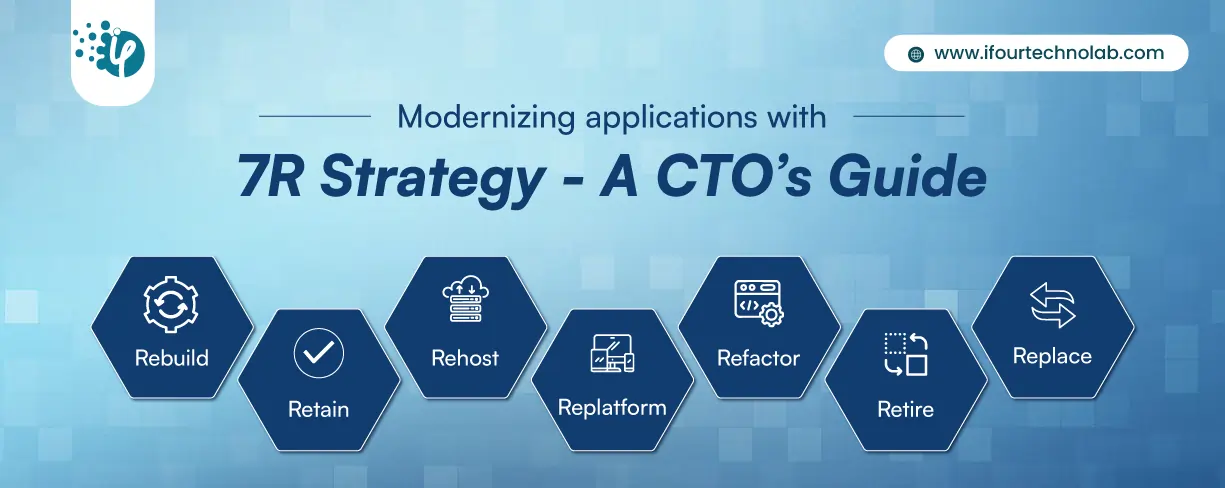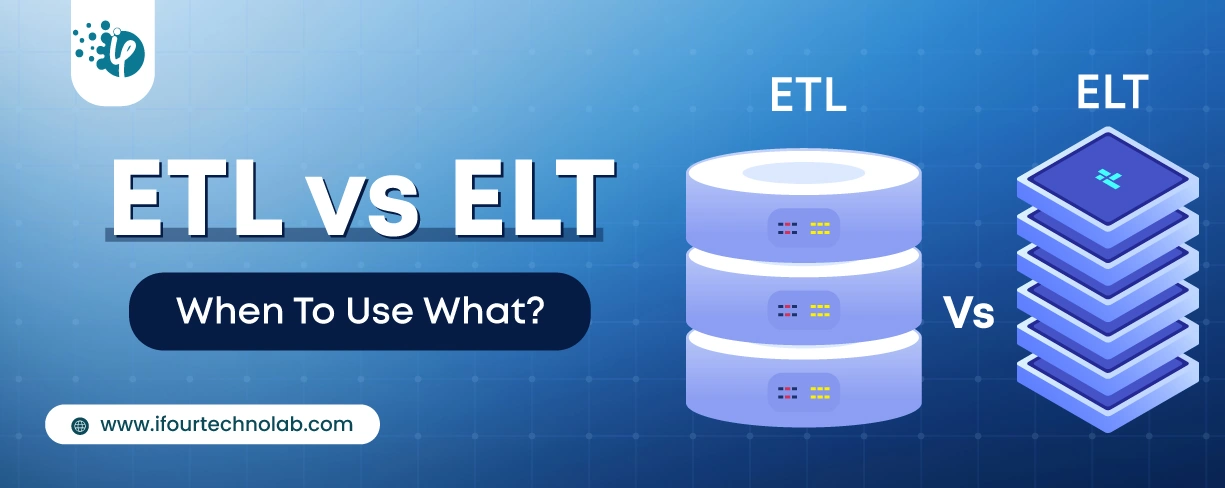How to Do Forecasting in Power BI (Steps & Accuracy Metrics)
Remember our last guide - Power BI forecasting? It revealed things that truly blocks accuracy, both structural and situational. Now it's time to take the next step. Knowing Power...
Listening is fun too.
Straighten your back and cherish with coffee - PLAY !

Think about the last time CTOs spent most of their time fixing old systems. Updates were slow, servers were expensive, and adding new features took time.
Now, things have changed. Cloud technology applications can grow fast, collaborate, and meet business demands quickly.
CTOs now focus on enhanced systems and helping businesses grow. Using the right app modernization strategy and modernization framework for CTOs, old systems can become faster, safer, and more useful.
In this blog, we will explain the 7Rs of application modernization. You will learn how to update old applications, reduce risks, clear application modernization services, and follow simple steps for success.
Every organization has a mix of old and new applications. Some still work well, while others hold back progress. The 7Rs of application modernization help CTOs decide what to do with each system, whether to keep, improve, move, or replace it.
Let’s look at each of the 7Rs in simple terms:-
What does “retiring” an app mean?
Retiring means removing applications that are old-fashioned, unused, or no longer support business goals. It helps simplify your IT environment and reduce unnecessary costs.
When should you consider retiring a legacy system?
When a legacy system becomes costly to maintain, has security risks, or is replaced by modern tools in your app modernization strategy.
Business benefits of letting go of outdated tools
Retiring old systems allows organizations to save money, reduce risks, and focus resources on modern technology as part of a strong application modernization roadmap.
Example case study
A retail company retired its old inventory tracking app after moving to a cloud-native modernization platform. This reduced server costs and improved real-time stock visibility.
Improve your business scalability with Microsoft 365 development services
What is “retaining” in app modernization?
Retaining means keeping an existing system that performs well and supports business operations.
How to decide if an app is still useful as is
If an app is stable, secure, and fits your modernization framework for CTOs, it may not require immediate changes.
Risks and rewards of keeping legacy systems unchanged
The reward is cost savings and stability. The risk is falling behind in performance or missing out on new features of enterprise app modernization.
Example case study
A logistics company decided to retain its ERP system because it met all enterprise needs and focused instead on modernizing legacy applications for customer service.
What is “lift and shift” cloud integration?
Rehosting means changing your application rehosting and refactoring to the cloud migration strategy without changing its code or features. It is usually the early stage in a cloud integration strategy.
Why rehosting is a quick win for CTOs
It allows faster cloud adoption without risk and helps teams experience the benefits of app modernization quickly.
When rehosting makes sense for your business
When your system works well but needs better speed, scalability, and security through cloud-native modernization.
Example case study
A healthcare company has relocated its payment system to Azure Cloud, making it more productive and boosting management.
Struggling to manage many devices? Fix it with our Azure IoT Hub Consulting Services
Difference between replatforming and rehosting?
Replatforming is shifting an app to the cloud and making various changes to improve results. Unlike rehosting, some adjustments are made to improve compatibility and performance.
How to upgrade without rewriting your app
By updating certain components, such as the database or web server, while keeping the core logic the same.
Business value of moving to a better platform
It makes the app faster, more efficient, and easier to update without reformation. This makes it an important step in modernizing outdated systems.
Example case study
A retail company moved its online store to a new system. This made the website speed up and reduced maintenance costs.
What is refactoring?
Refactoring means improving the context of your code without making more changes.
Why improving code matters for performance
When the code is clear, the app works faster, is easier to fix, and remains safe from problems.
When refactoring helps reduce tech liability
When outdated code slows down development or affects the quality of modernizing legacy applications.
Example case study
A software firm reorganized its sales management system, making it easier to maintain and improve customer response times.
What is re-architecting?
Rearchitecting means reorganizing an application to meet future desires. It often includes moving from monolithic to adaptable cloud architecture.
How redesigning your app supports scalability
It allows the system to handle more users, integrate easily, and support digital transformation for CTOs.
When to consider rearchitecting for long-term growth
When the current system cannot support expansion, high performance, or security goals.
Example case study
A banking company rearchitected its transaction system using Azure app services. This helped process more transactions with improved speed and reliability.
Get your Apps quickly built with Microsoft Power Apps Development Services
What does replacing an app involve?
Replacing means removing an outdated system and selecting a new one that better meets business needs.
Why starting fresh can be the smartest move
It gives organizations access to modern features, reduces maintenance, and aligns with modernization best practices.
How to choose the right replacement solution
Select a cloud-based system that supports your enterprise app modernization goals and can grow your business.
Example case study
An insurance company replaced its outdated claims system. The new system improved data precision and customer satisfaction while simplifying management.
This blog explained the 7R strategy of app modernization and how it helps CTOs build a clear modernization framework. From retiring old systems to replacing them with modern cloud solutions, each step supports faster, safer, and smarter business operations.
CTOs can simplify legacy system transformation, improve performance, and reduce long-term costs. It is not just about moving to the cloud but about creating a flexible system that grows with your business.
iFour Technolab helps enterprises build practical application modernization guidelines. Our experts guide you through rehosting, refactoring, and rearchitecting to achieve uninterrupted digital modification.
Let us help you modernize legacy applications with the 7R strategy and create a progressive, cloud-native business system that supports innovation and growth.
CTOs start by assessing current systems, identifying performance gaps, and choosing the right 7R approach based on business goals and technical needs.
The best strategy depends on your goals. Some systems only require rehosting, while others may necessitate rearchitecting or replacement for improved performance.
Rehosting moves applications to the cloud with minimal changes, while rearchitecting redesigns the system to make it more scalable and efficient.
App modernization enables CTOs to reduce maintenance costs, enhance system performance, and prepare their business for future digital transformation needs.

Remember our last guide - Power BI forecasting? It revealed things that truly blocks accuracy, both structural and situational. Now it's time to take the next step. Knowing Power...

It's amazing to see how Data teams today are racing ahead - moving from traditional warehouses to cloud-native platforms, lakehouses, and real-time architectures. But in this rush,...

Think about the last time CTOs spent most of their time fixing old systems. Updates were slow, servers were expensive, and adding new features took time. Now, things have changed....